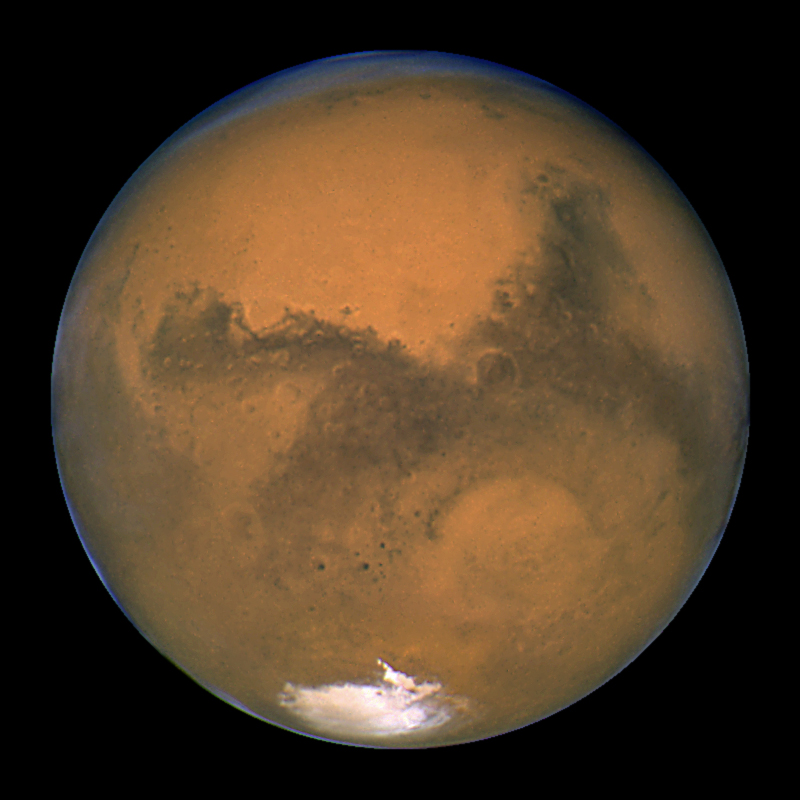How to See Live Views of Mars Online This Week

NASA is just days away from putting a huge rover on Mars, but you don't have to wait until the robot's Sunday landing to see the Red Planet.
Starting today (Aug. 1), the web-based Slooh Space Camera sky observing site will webcast live views of Mars during three daily shows aimed at giving space enthusiasts a taste of the Red Planet before NASA's Mars rover Curiosity arrives on Sunday night (Aug. 5). The free webcasts, which begin at 5 p.m. EDT (2100 GMT), will touch on different aspects of Mars exploration and the rover's ambitious mission, Slooh officials said.
"No celestial object can equal the mystique and intrigue of Mars," said astronomer Bob Berman, an Astronomy magazine columnist and Slooh editor, in a statement. "It is the nearest planet that could potentially have life, even if we now know it would have to be lurking under the surface. Plus, the Red Planet displays the most striking changes since every 26 months it rather suddenly becomes 60 times brighter than before. "
From Aug. 1 to Aug. 3, the Slooh Space Camera will webcast live telescope views of Mars from the website's Canary Islands observatory off the west coast of Africa. The telescope feeds, as well as commentary from a NASA scientist, Slooh officials and British documentary filmmaker Duncan Copp, can be accessed at the Slooh Space Camera website here: http://www.slooh.com
During tonight's webcast, Robert Manning, the chief engineer for NASA's Mars exploration program, will join Copp and Slooh president Patrick Paolucci to discuss the technology behind the Mars rover Curiosity and its $2.5 billion mission to explore the vast Gale Crater on the Martian surface.
The Curiosity rover is about the size of a Mini Cooper car, carries a nuclear power source for a two-year mission and is designed to spend at least two Earth years exploring Mars. It launched toward the Red Planet last November and is the largest rover ever sent to another world.
"Curiosity promises to be the most advanced spacecraft ever sent to Mars, and its discoveries are set to transform how we see the Red World," said Copp, who is producing a short film on the rover's mission.
Get the Space.com Newsletter
Breaking space news, the latest updates on rocket launches, skywatching events and more!
Mars is currently visible in the night sky without the aid of a telescope (weather permitting). The Red Planet can be seen low in the southwestern sky just after sunset and dips below the horizon at about 10:30 p.m. local time.
Later this month, Mars will appear near other interesting night sky objects. On Aug. 14, Mars will shine near the ringed planet Saturn and bright star Spica. Then on Aug. 21, the moon joins the three objects for a quadruple celestial sight.
Follow SPACE.com on Twitter @Spacedotcom. We're also on Facebook & Google+.

Join our Space Forums to keep talking space on the latest missions, night sky and more! And if you have a news tip, correction or comment, let us know at: community@space.com.

Space.com is the premier source of space exploration, innovation and astronomy news, chronicling (and celebrating) humanity's ongoing expansion across the final frontier. Originally founded in 1999, Space.com is, and always has been, the passion of writers and editors who are space fans and also trained journalists. Our current news team consists of Editor-in-Chief Tariq Malik; Editor Hanneke Weitering, Senior Space Writer Mike Wall; Senior Writer Meghan Bartels; Senior Writer Chelsea Gohd, Senior Writer Tereza Pultarova and Staff Writer Alexander Cox, focusing on e-commerce. Senior Producer Steve Spaleta oversees our space videos, with Diana Whitcroft as our Social Media Editor.









